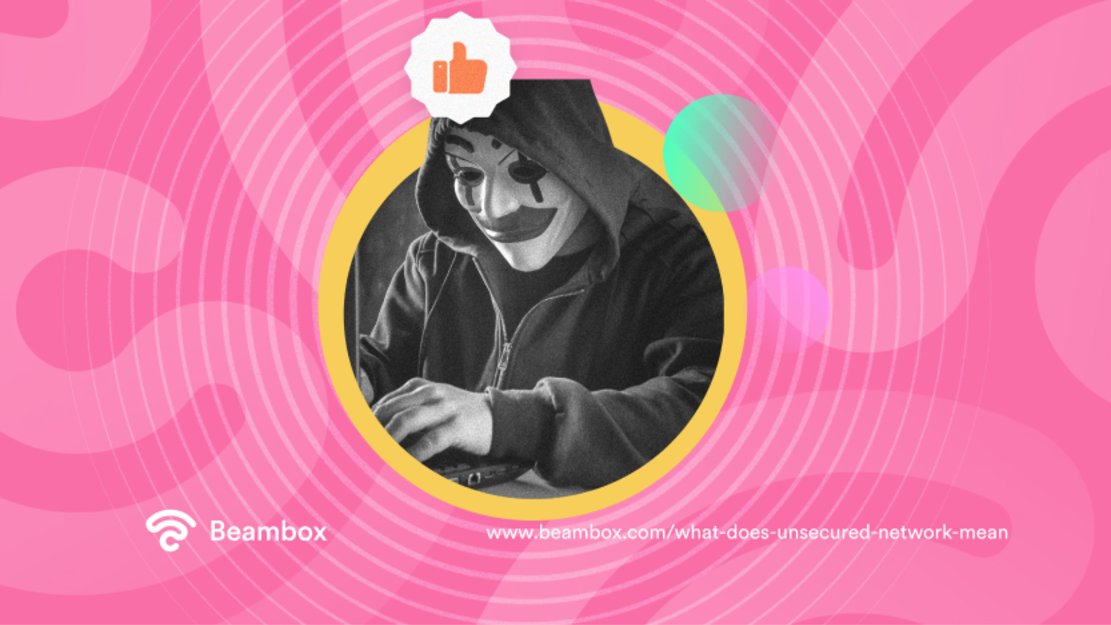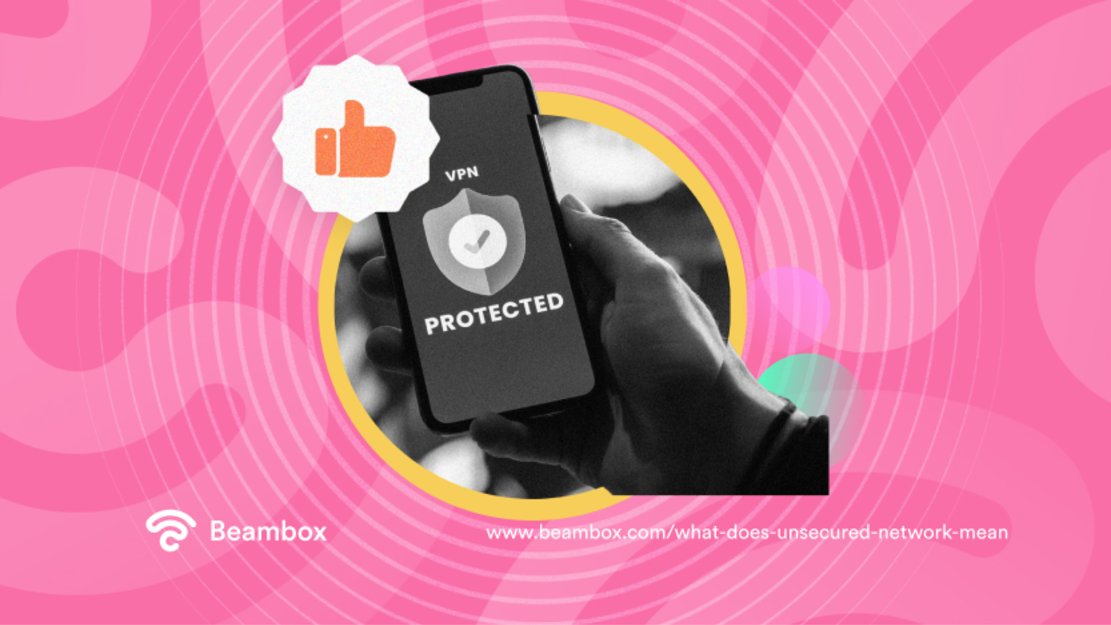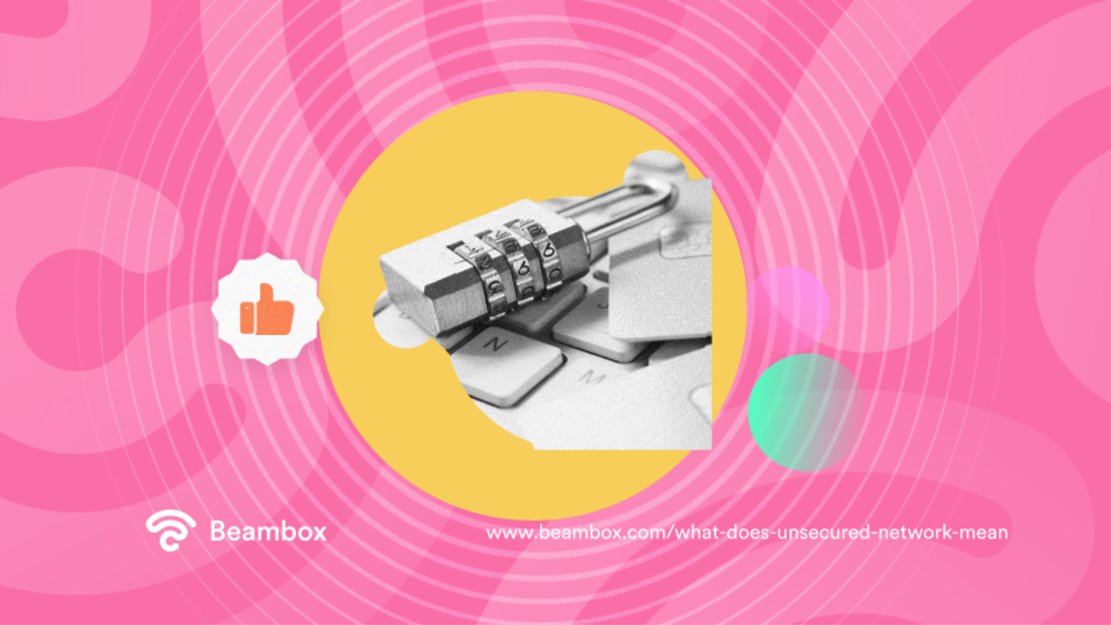“What does unsecured network mean?” is a question you might have if you find free WiFi in a public place.
Your device sometimes shows you a warning saying that the network you’re trying to connect to is not secure. While this is most common with open public networks, you can also face this issue at home.
Confusion and panic are natural when you see this message. If you want to avoid that, you’ve found the perfect article. We’ll you up with the best tactics to protect yourself and deal with unsecured networks.

Are Unsecured Networks Safe?
While your device’s security also has a say, the straightforward answer to “Are unsecured networks safe?” is no.
Anyone can access an unsecured network without authentication. You don’t have to complete the captive portal authentication to enjoy the Internet on these networks.
In an ideal world, this would just be fantastic. But the world we live in is far from ideal. People are trying to hack into networks in hopes of getting their hands on valuable information. Things like bank account credentials and personal information give way to stolen money and other losses.
Public WiFi poses risks and lacks the robust security that trusted networks have. This means the lack of encryption exposes the data on these networks.
Even if the websites you access have an HTTPS connection, you’re not entirely safe. After all, hacking these networks is quite easy and cheap.
There’s a legal side to it as well. Connecting to guest networks in public is fine since a business provides it. But to connect to a neighbor’s open network, you must have prior consent.

Why Does My WiFi Say “Unsecured Network”?
People facing this issue often wonder, “Why does my WiFi say ‘unsecured network’?” The problem lies within the WiFi security features. This warning is most common with older routers that don’t have the latest security.
Even with new routers, a wireless network isn’t secure unless it has WPA2 or WPA3 security. Here’s why.
The oldest security protocol, WEP, uses the same keys for encryption and decryption for all devices on a single network. Due to the static nature of this key, it doesn’t take long for hackers to figure it out.
Once the WiFi Alliance overruled this technology, WAP entered the picture. Its main purpose was to solve the static key issue.
For that, it issued a new key for each session. But still, it wasn’t enough because hackers found new ways to breach its security protocols.
This situation led to the introduction of WPA2, the standard security protocol that is necessary for a secure network. It uses Advanced Encryption Standard (AES), which has stronger integrity checks. It owes its popularity to special authentication servers and special keys for each device or user.
However, hackers can use WEP to pass through this security. That makes WPA3 the ultimate choice for connecting to a WiFi network.
It gives a different key to encrypt and decrypt every piece of data. Even if a hacker accesses a session, figuring out each key would be like finding a needle in a haystack.
So, if your connection says “unsecured network,” you’re probably using the wrong security protocol.
3 Safe Ways of Using Unsecured WiFi
Since everything is shifting online, it’s hard to imagine a single second without an Internet connection. Of course, there are mobile networks that you can use wherever you go.
But who doesn’t love an opportunity to save some money? If you belong to that group, open networks might be your first choice.
However, as you saw in the previous sections, using unsecured WiFi comes with its risks. Even then, there are some things you can do to access these networks safely. Here are three of them.
1. Update Your Devices Regularly
The most obvious answer to using a public network safely is keeping your devices updated. Whether you’re using a smartphone, tablet, or laptop to connect to these networks, it must have the latest security protocols.
Companies release updates for this same reason: to make the features better, and that includes security. So, here’s what you need to do to make sure your device is up to date.
Firstly, all devices send a prompt or request to install new updates. Never ignore this request.
Even if you’re busy at that moment, you will have an option to get a reminder later. Make sure you choose that.
Secondly, most apps and software allow you to install updates automatically. Turn this on for all apps, especially the ones you enter your personal information.
Moreover, two-factor authentication in such apps is a great way to secure your accounts. So, turn that on for apps that allow it and use strong passwords. Plus, you can always make use of antivirus software.

2. “What Does Unsecured Network Mean” Is Irrelevant if You Use a VPN
People have always associated VPNs with good network security, and there’s a good reason for it. That’s because a VPN provides not one but two key services to protect your data.
At the outset, it encrypts all your data while using the internet. The other service is hiding your IP address, giving you more privacy. Here’s how these features work:
- Your device connects to the VPN server.
- The server and device authenticate each other through credentials and certificates. The reason for this is to make sure your device is connecting to the right network.
- Next, the two mediums exchange cryptographic keys to encrypt and decrypt data during the session.
- Here, the VPN server assigns your device a new IP address that has nothing to do with your physical location.
- The software creates a secure, encrypted tunnel over the public WiFi.
- Then, the encrypted data travels through that tunnel.
- The VPN server decrypts the data by using the shared keys.
This gives the illusion of a private network, making your data impossible to steal or decode. To add an extra layer of security, forget the public network and log out when you no longer need it. Businesses sometimes use VPN on a router level to strengthen their public WiFi security. However, such applications require some IT skills.
That way, you won’t have to worry about, “What does an unsecured network mean?”

3. Turn Off Auto Connect and File Sharing
The third and last way is to configure your device the right way. While you can’t control the type of security the public network uses, you can control how your device reacts.
All devices give you the option to choose whether or not your device automatically connects to a known network. You can simply do this by visiting your device’s settings.
This way, you’ll have a chance to make the actual decision to connect to a public network.
Also, you should turn off file sharing from your settings. Otherwise, someone on the network might access your files and folders.
Keep Your Data Safe When Connecting to Public WiFi
“What does ‘unsecured network’ mean?” is a smart question to pose yourself when connecting to a public WiFi. Staying safe online is very important, especially if you are doing sensitive operations. Moreover, if you run a business, securing your guest network is essential.
To simply secure your WiFi, you can try Beambox. It’s a WiFi marketing platform that helps you implement security features that keep the network secure.
For example, with Beambox, you can change your password every day so that only authorized customers can connect. Beambox also provides marketing automation and reputation management tools. Start your trial today!
Get Started With Free WiFi Marketing
Beambox helps businesses like yours grow with data capture, marketing automation and reputation management.
Sign up for 30 days free